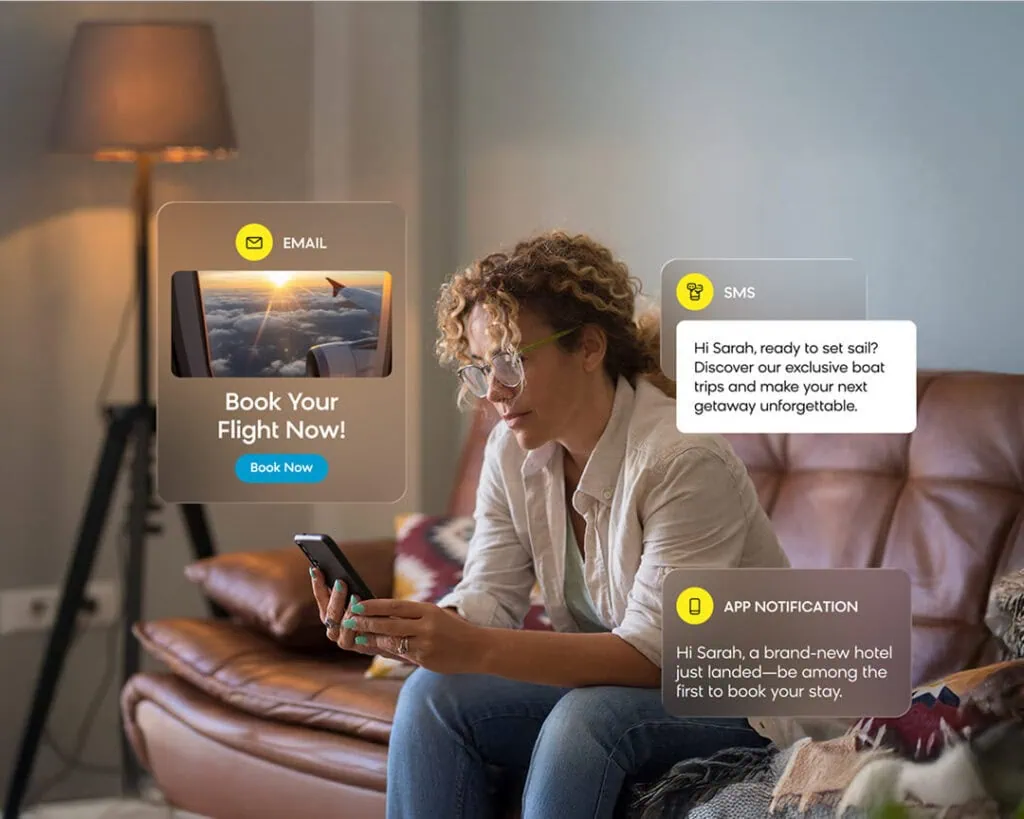Research shows that, for many people, purchases are often habitual; the brands they choose are narrowed to a small selection of the total market, based on semi-conscious factors like familiarity.
Moments of change present a great opportunity for marketers to interrupt these habitual cycles, as they create periods of reflection and force shifts in consumer behaviour.
As digital commerce has evolved into this new digital-first era, consumers now question how they are living their lives, from how they shop, to how they interact, to how they work.
This presents a significant opportunity for challenger brands to interject into the decision process of a vast number of consumers who are usually less receptive to change.
An Opportunity for Telco and Financial Services
Challengers who put a relentless focus on both the customer relationship and enabling that relationship through digital channels are well placed to challenge the goliaths with which they compete – particularly in telco and financial services.
Whilst these organizations certainly have powerful assets in their agility and often more intimate brand identity, now is absolutely the time to level up their capacity to understand, interact with, and delight customers at scale.
Bloomreach and The Experience Works have partnered to help challenger brands in telco and finance supercharge their insight and interaction capability, leapfrogging the pitfalls and pain of organic evolution, to embed the expertise and technology required to ensure fantastic, intelligence-led, customer management.
As part of our work, we have created a list of the most important steps brands in these spaces need to deliver on while on their way to customer nirvana.
9 Steps to Challenge the Status Quo
1. Create a Single Customer View
We can’t overstate this enough, the data may not be the super exciting bit (for some), but it is the most important! You wouldn’t build a mansion on quicksand. Bringing together relevant data, from all sources, in real-time, is the cornerstone of everything that follows. Without it, the chances of maximizing the value of any investments or activity-dependent on data are vanishingly small.
2. Identify the Most Effective Acquisition Channels
Use predictive analytics and propensity to buy to score and rank leads in buyer segments, then use these to engage buyers in real-time. For example, retargeting across search, social and mobile apps or sending customer insights to call centre sales associates.
3. Improve Web-Lead Generation and Conversion
Harness website, email, and mobile personalization to optimize tailored content and messaging for individual segments. Use psychographic data to engage leads on an emotional level.
4. Embed Customer Tracks
Industrialise and structure key journeys – welcome, onboarding, retention, win-back – and management of high and ultra-high value customers, with triggered and model-driven tracks. This helps ensure segment objectives are achieved, potential customer lifetime value (CLV) is maximized, and journey narratives are cohesive.
5. Journey Analytics
Journeys are great… to a point, but we all know the dangers of assuming people will behave in specific ways. Journey analytics are vital for understanding struggle points and how different customers track through touchpoints to ensure your customers have simple, pain-free interactions.
6. Ensure Seamless Omnichannel Interactions
By centralizing customer planning & logic for marketing, sales, and service; and integrating contact centre, retail, and ecommerce, with digital marketing channels, ensure customers are able to have seamless conversations with you across the lifecycle.
7. Next Best Action for In-Life Comms
Blend machine learning with human creativity to ensure in life customers are served a personalised experience at the point of interaction, ensuring cross-sell / upsell opportunities are maximised.
8. Capture, and React to, Customer Sentiment
Automate NPS capture and track sentiment as a driver of a culture of continuous improvement.
9. Foster a Culture of Curiosity and Science
Put analytics and curiosity at the heart of decision making, to avoid received wisdoms & marketing myths, experiment often on a small scale – whether that’s behavioral or analytical, and use data to augment human ingenuity.
How to Get Started
Getting this right is not easy. It requires the right thinking, technology, and expertise, and should be viewed as a journey, rather than a big bang. Companies will find themselves at different stages of that journey, some with a clearly defined end goal, and others through organic growth and necessity.
Ready to learn more? Schedule a personalized demo today.















